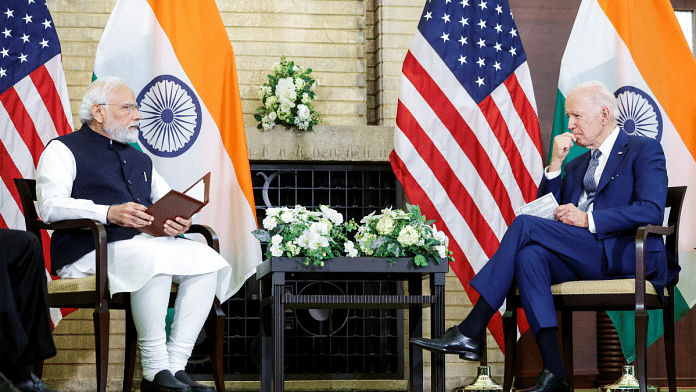it has been nearly 18 years since the United States and India jointly announced their intention to initiate civilian nuclear trade. While the commercial promise of this step remains unfulfilled, the potential benefits of civilian nuclear cooperation are expanding. The Narendra Modi government should consider amending the Civil Liability for Nuclear Damage Act to unlock the promise envisioned earlier. Expanding nuclear power generation will help India meet its Make in India and energy independence goals. It will also further cement the deepening US-India strategic partnership.
India was an early adopter of nuclear power. Its 1974 “peaceful nuclear tests” led to other nations cutting off support to New Delhi. But the subsequent nuclear tests in 1998 and the knowledge that the nation intended to build a nuclear weapons stockpile triggered American interest in re-engaging with India on civilian nuclear cooperation. This new interest was reflected in early 2004 when the US and India signed the Next Steps in Strategic Partnership (NSSP). Despite the change in government in Delhi, in July 2005, American President George W Bush and Indian Prime Minister Manmohan Singh firmly laid down the roadmap for civilian nuclear cooperation, starting a frenzy on both sides.
However, while both US and India took courageous steps to move ahead with nuclear trade, their cooperation was paralysed in 2010 when Parliament passed the Civil Liability for Nuclear Damage Bill 2010. This legislation’s open-ended approach to supplier liability in case of a nuclear accident precluded any nuclear trade between the two nations. Delhi set up the Indian Nuclear Insurance Pool to indemnify nuclear reactor suppliers against liability, but this body has been unable to promote any actual trade. It is viewed as expensive, and its untested nature adds new types of risk to suppliers. The legislation must be further amended to refocus liability on the operator as with the Convention on Supplementary Compensation (CSC), which India had adopted in 1997 and works to balance citizen safety and financing requirements. There are real concerns about the risks related to nuclear plant crises, but atomic power isn’t going to be phased out anytime soon — even Japan is turning toward it just a decade after the disaster at the Fukushima Daiichi plant.
Also read: Is Jake Sullivan resurrecting Obama’s G2? His presence in India-US ties points to a…
Where nuclear power plugs in
India has several reasons to promote domestic clean energy supplies. They help balance trade, provide crucial energy security, improve local employment creation, and help the country contribute to global climate targets.
In recent years, however, the policy thrust for clean energy in India has shifted toward solar and wind power. They both benefit the country in similar ways as nuclear power. But for India to fulfil its ambitious renewable energy targets, it must make use of all three energy resources. A good development is that nuclear power is evolving, and developers are increasingly focusing on smaller, more cost-effective reactors.
Nuclear power can plug in where wind and solar energy fall short — by ensuring a constant supply. Atomic power does not have the dramatic fluctuations triggered by changing weather patterns or nightfall. In my programme’s work, we find that state governments in India have announced goals to reduce the reliance on coal-fired thermal power. And although they are working toward building renewable energy capacity, practically speaking, they continue with coal-fired plants because they are reliable. Nuclear power can offer a solution to this problem.
Also read: General Electric jet deal will be a test of India-US trust. Critical tech at…
Some crucial sectors
Consistent electric power at scale is critical for heavy industries. The Narendra Modi government today is pushing for big investments in energy-intensive sectors. Many of these would pair well with nuclear power. These include hydrogen production, data centres, and semiconductor manufacturing.
Hydrogen: The US Department of Energy estimates that a single 1,000 MW nuclear reactor can produce 150,000 tons of hydrogen per year.
Data Centres: The department also estimates that data centres use between 10 and 50 times the energy per floor space of typical commercial buildings. The International Energy Agency (IEA) estimates that data centres and transmission networks account for nearly 1 per cent of greenhouse gas emissions. This will only grow over time.
Semiconductors: Semiconductor manufacturing is the most energy-intensive subsector in the information and communications technology industry—and is expected to scale up dramatically in the coming years as semiconductor manufacturing becomes more widespread and the chips become more complex.
The Modi government’s Make in India will be much more successful if manufacturing firms find stable electric power grids. Renewable energy should remain a focus area, supplemented by investments in nuclear power as baseload and reliable generation.
While a renewed focus on nuclear power generation holds enormous promise for India domestically, this thrust will also help the country meet its commitment to creating 500 GW of non-fossil fuel power by 2030. It will also help Delhi improve its energy independence, reducing economic instability caused by global price fluctuations, and reducing dependence on non-democratic and market-illiberal nations.
The US-India Civil Nuclear Cooperation Initiative is nearly 20 years old. Its importance as an inspirational guidepost for “what is possible” remains alive. However, the commercial relevance of the agreement has yet to be fulfilled. As the Modi government enters its last year in office, it should strongly consider revisiting the Civil Liability for Nuclear Damage Act 2010. This will further enhance India’s partnership with the US, help it meet its global climate commitments, and, most importantly, set the table for success in key Make in India sectors.



